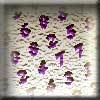Skip over navigation
Allow children plenty of time to work in pairs, bringing the together to share important ideas at suitable intervals, if appopriate (a mini-plenary).
In the plenary, you could choose a few pairs to explain their thinking to everyone.



Or search by topic
Number and algebra
Geometry and measure
Probability and statistics
Working mathematically
Advanced mathematics
For younger learners
Back to School
Age 7 to 11
Challenge Level 





- Problem
- Student Solutions
- Teachers' Resources
Why do this problem?
This activity involves a great deal of calculating in a context which might engage children! Learners will have to read the information carefully in order to extract the appropriate figures.
Possible approach
You could introduce the problem in the form of a story, perhaps by projecting it, a paragraph at a time. Having read everything through once, invite children to chat in pairs about what they might do. Take some suggestions and then perhaps read everything through again.Allow children plenty of time to work in pairs, bringing the together to share important ideas at suitable intervals, if appopriate (a mini-plenary).
In the plenary, you could choose a few pairs to explain their thinking to everyone.
Key questions
What order do you want to work things out?
What does this tell you?
What does this tell you?
You may also like
Exploring Wild & Wonderful Number Patterns
EWWNP means Exploring Wild and Wonderful Number Patterns Created by Yourself! Investigate what happens if we create number patterns using some simple rules.
Sending Cards
This challenge asks you to investigate the total number of cards that would be sent if four children send one to all three others. How many would be sent if there were five children? Six?
Dice and Spinner Numbers
If you had any number of ordinary dice, what are the possible ways of making their totals 6? What would the product of the dice be each time?

